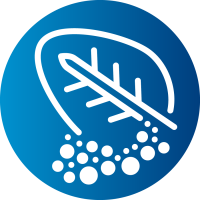
Total Organic Carbon in water
What is total organic carbon (TOC)?
Natural organic matter (NOM) occurs naturally in the environment and may also be the result of human activities. NOM varies in terms of physical and chemical characteristics in all ground and surface waters, as well as in rainwater.
Carbon is the key constituent of NOM. That’s why we consider particulate, dissolved and total organic carbon (POC, DOC and TOC) quantitative measures of particulate, dissolved and total organic matter, respectively.
The effects of TOC
Health
- TOC has an indirect impact on health.
- TOC in the presence of chlorine contributes to the formation of disinfection by-products.
- TOC is one of the main causes of the formation of disinfection by-products (DBPs), including trihalomethanes (THMs) and haloacetic acids (HAAs).
- HAAs and THMs are harmful to health, and their concentration is regulated.
Colour and transmittance
- TOC is one of the causes of water discolouration.
- Water discolouration is often associated with low transmittance, which impedes UV reactor treatment.
Recommendations
- Currently, there are no Canadian or provincial TOC standards.
- According to U.S. standards (U.S. EPA), they recommend reducing TOC levels to 2 mg/L in source water.
How can we prevent TOC formation in water?
The concentration of total organic carbon (TOC) in water can be reduced by using an anion exchange unit.
How can Magnor help?
Magnor manufactures custom-built anion exchange resin systems that can help control TOC (total organic carbon) levels. Our systems have proven their effectiveness over time.